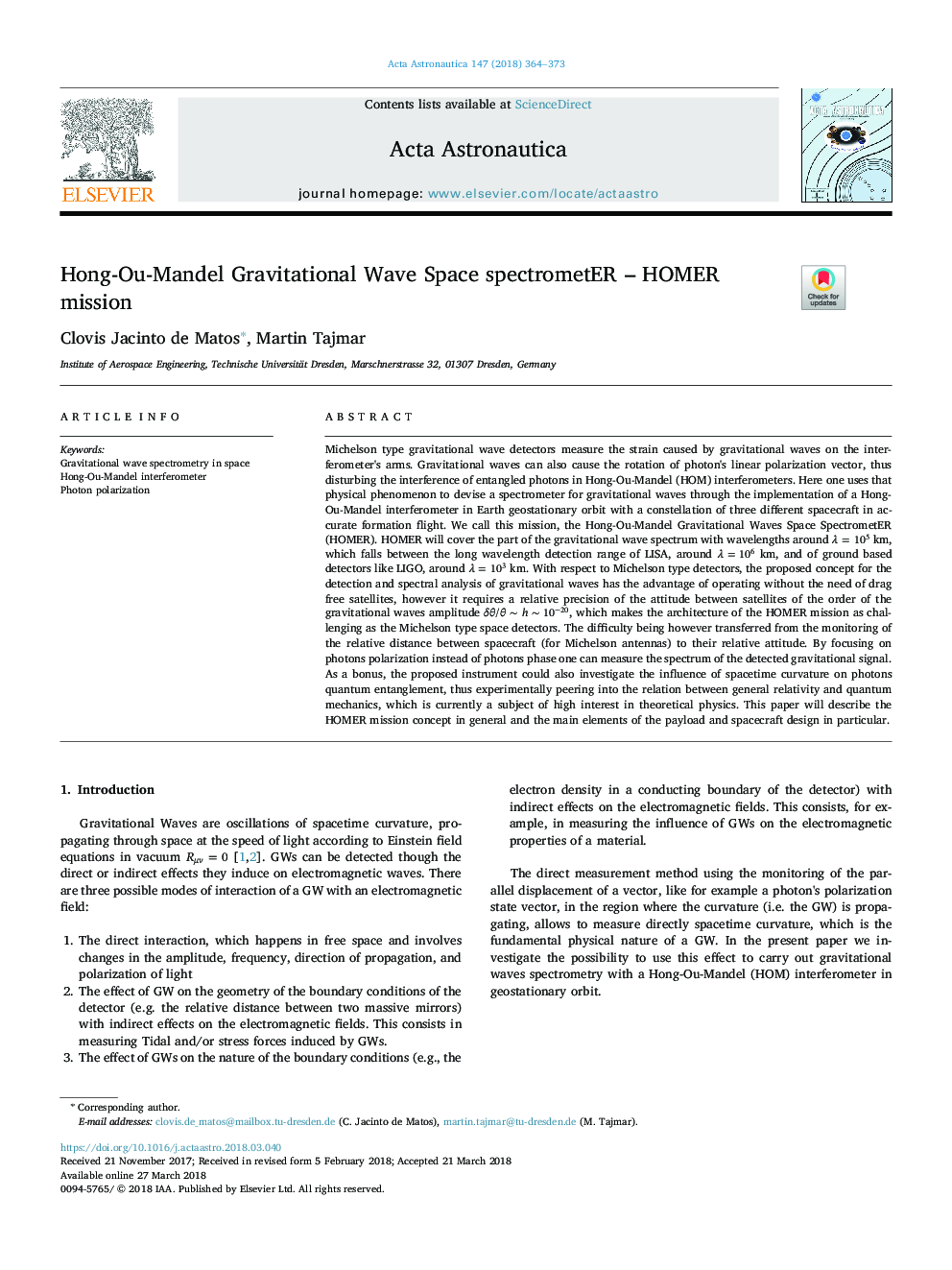| Article ID | Journal | Published Year | Pages | File Type |
|---|---|---|---|---|
| 8055554 | Acta Astronautica | 2018 | 10 Pages |
Abstract
Michelson type gravitational wave detectors measure the strain caused by gravitational waves on the interferometer's arms. Gravitational waves can also cause the rotation of photon's linear polarization vector, thus disturbing the interference of entangled photons in Hong-Ou-Mandel (HOM) interferometers. Here one uses that physical phenomenon to devise a spectrometer for gravitational waves through the implementation of a Hong-Ou-Mandel interferometer in Earth geostationary orbit with a constellation of three different spacecraft in accurate formation flight. We call this mission, the Hong-Ou-Mandel Gravitational Waves Space SpectrometER (HOMER). HOMER will cover the part of the gravitational wave spectrum with wavelengths around λ=105 km, which falls between the long wavelength detection range of LISA, around λ=106 km, and of ground based detectors like LIGO, around λ=103 km. With respect to Michelson type detectors, the proposed concept for the detection and spectral analysis of gravitational waves has the advantage of operating without the need of drag free satellites, however it requires a relative precision of the attitude between satellites of the order of the gravitational waves amplitude δθ/θâ¼hâ¼10â20, which makes the architecture of the HOMER mission as challenging as the Michelson type space detectors. The difficulty being however transferred from the monitoring of the relative distance between spacecraft (for Michelson antennas) to their relative attitude. By focusing on photons polarization instead of photons phase one can measure the spectrum of the detected gravitational signal. As a bonus, the proposed instrument could also investigate the influence of spacetime curvature on photons quantum entanglement, thus experimentally peering into the relation between general relativity and quantum mechanics, which is currently a subject of high interest in theoretical physics. This paper will describe the HOMER mission concept in general and the main elements of the payload and spacecraft design in particular.
Keywords
Related Topics
Physical Sciences and Engineering
Engineering
Aerospace Engineering
Authors
Clovis Jacinto de Matos, Martin Tajmar,
